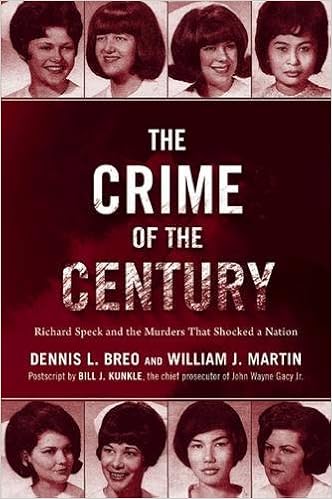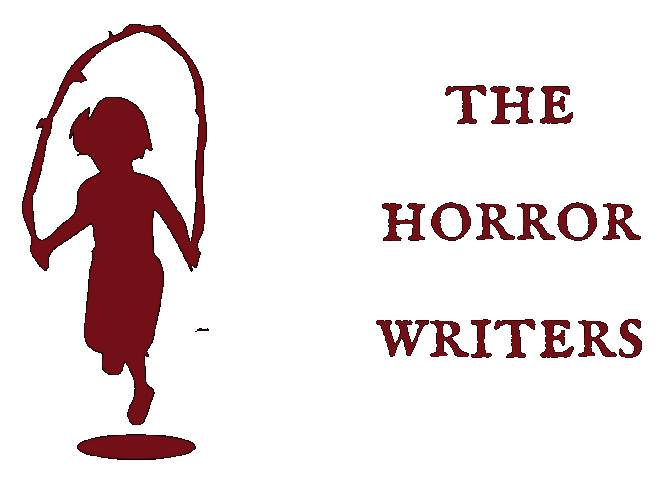“Based on true events.” Four little words that have the power to heighten tension before the story even begins. Heinous crimes have long served as inspiration for genre writers, giving us works such as Room (based upon the Fritzl case), We Need To Talk About Kevin (inspired by the Columbine massacre), and The Night of the Hunter (drawn from the Lonely Hearts murders).
In order to explore the beast within man, we need look no further than notorious cases of the past. From mass murderers to demented appetites, the ugliness of the human race is a deep well, one that can be drawn from for creative fodder. The following is a roundup of non-fiction books chronicling the accounts of real-life atrocities, disappearances and unsolved deaths. Truth may be stranger than fiction, but it can also inspire it.
 1. Helter Skelter, by Vincent Bugliosi: The former lead prosecutor in the Manson Family case, Vincent Bugliosi, provides an in-depth account of what went down in the summer of 1969. Bugliosi brings the Manson cult to life in just under 700 pages, providing character motives and a play-by-play of the trial that put you in the courtroom along with him. Juxtapositions of law and order against savage human nature give us incredible commentary on how far we’ve come as a society, and how much further we have to go.
1. Helter Skelter, by Vincent Bugliosi: The former lead prosecutor in the Manson Family case, Vincent Bugliosi, provides an in-depth account of what went down in the summer of 1969. Bugliosi brings the Manson cult to life in just under 700 pages, providing character motives and a play-by-play of the trial that put you in the courtroom along with him. Juxtapositions of law and order against savage human nature give us incredible commentary on how far we’ve come as a society, and how much further we have to go.
 2. Columbine, by Dave Cullen: On April 20, 1999, a Colorado high school (and America, by extension) was rocked by a devastating act of violence, committed by two disturbed young men. For the next decade, author Dave Cullen remained in the area as he attempted to make sense of the senseless tragedy. In an extremely unsettling account of the events of the Columbine massacre, Cullen puts us in the classrooms with the students, hiding behind upturned desks and waiting in fear as the shooters roamed the hallways, looking for their next victim. If you’ve never felt true terror, this book provides insight into that experience.
2. Columbine, by Dave Cullen: On April 20, 1999, a Colorado high school (and America, by extension) was rocked by a devastating act of violence, committed by two disturbed young men. For the next decade, author Dave Cullen remained in the area as he attempted to make sense of the senseless tragedy. In an extremely unsettling account of the events of the Columbine massacre, Cullen puts us in the classrooms with the students, hiding behind upturned desks and waiting in fear as the shooters roamed the hallways, looking for their next victim. If you’ve never felt true terror, this book provides insight into that experience.
 3. For the Thrill of It, by Simon Baatz: Have you ever seen Hitchcock’s “Rope”? That story of two wealthy young men who kill a fellow student just for kicks was inspired by the chilling case of Leopold and Loeb. In 1924, Nathan Leopold and Richard Loeb, two graduate students from wealthy families, kidnapped and murdered a 14-year-old boy. Experts commented that the two were a toxic pair, and each would have been fairly harmless on his own. Once they put their heads together, though, they were a callous and devious duo. Does your work in progress have a killer couple? Try this book out.
3. For the Thrill of It, by Simon Baatz: Have you ever seen Hitchcock’s “Rope”? That story of two wealthy young men who kill a fellow student just for kicks was inspired by the chilling case of Leopold and Loeb. In 1924, Nathan Leopold and Richard Loeb, two graduate students from wealthy families, kidnapped and murdered a 14-year-old boy. Experts commented that the two were a toxic pair, and each would have been fairly harmless on his own. Once they put their heads together, though, they were a callous and devious duo. Does your work in progress have a killer couple? Try this book out.
 4. The Crime of the Century: Richard Speck and the Murders That Shocked a Nation, by Dennis L. Breo and William J. Martin: In the dead of night on July 13th, 1966, one of the most horrific crimes of the twentieth century unfolded. This book mostly focuses on the police procedures and court proceedings during Richard Speck’s capture and subsequent trial. Together, the authors give a gut-wrenching account of how Speck murdered eight young nurses one-by-one over a period of four hours, and how law enforcement handled the massive manhunt that followed. This story is a display of the harsh fact that for many victims of violent crime, the nightmare doesn’t end when the perpetrator walks away. Catching and convicting the bad guys is a whole new ballgame.
4. The Crime of the Century: Richard Speck and the Murders That Shocked a Nation, by Dennis L. Breo and William J. Martin: In the dead of night on July 13th, 1966, one of the most horrific crimes of the twentieth century unfolded. This book mostly focuses on the police procedures and court proceedings during Richard Speck’s capture and subsequent trial. Together, the authors give a gut-wrenching account of how Speck murdered eight young nurses one-by-one over a period of four hours, and how law enforcement handled the massive manhunt that followed. This story is a display of the harsh fact that for many victims of violent crime, the nightmare doesn’t end when the perpetrator walks away. Catching and convicting the bad guys is a whole new ballgame.
 5. The Stranger Beside Me, by Ann Rule: True crime author Ann Rule was contracted to write a book about an (at the time) unknown serial killer. It was revealed that the man she was writing about, the man who had dispatched at least 30 women, was a man she not only knew, but had served with at a crisis center. Ann regarded Ted Bundy as an intimate, trusted friend and struggled with the reconciliation of that image with that of the man who stood accused of so many vicious murders. This book provides a keen look into the incredibly human charisma that some of the most inhuman monsters exude.
5. The Stranger Beside Me, by Ann Rule: True crime author Ann Rule was contracted to write a book about an (at the time) unknown serial killer. It was revealed that the man she was writing about, the man who had dispatched at least 30 women, was a man she not only knew, but had served with at a crisis center. Ann regarded Ted Bundy as an intimate, trusted friend and struggled with the reconciliation of that image with that of the man who stood accused of so many vicious murders. This book provides a keen look into the incredibly human charisma that some of the most inhuman monsters exude.
 6. Cannibal: The True Story Behind the Maneater of Rotenberg, by Lois Jones: Imagine a Hansel and Gretel fairy tale, but with a willing victim. This extreme story introduces us to Armin Miewes, a man who has an odd fetish: he wants to slaughter and eat another human being. He meets a man online who has a complementary fetish: he wants to be slaughtered and eaten by another human being. The subsequent “dinner date” and trial are described in riveting detail (NOT for the faint of heart). Cannibal is a shrewd investigation into the nature and nuture of an unbalanced human.
6. Cannibal: The True Story Behind the Maneater of Rotenberg, by Lois Jones: Imagine a Hansel and Gretel fairy tale, but with a willing victim. This extreme story introduces us to Armin Miewes, a man who has an odd fetish: he wants to slaughter and eat another human being. He meets a man online who has a complementary fetish: he wants to be slaughtered and eaten by another human being. The subsequent “dinner date” and trial are described in riveting detail (NOT for the faint of heart). Cannibal is a shrewd investigation into the nature and nuture of an unbalanced human.
 7. In Cold Blood, by Truman Capote: 1959. Holcomb, Kansas. All four members of the Clutter family were roused from their sleep at an ungodly hour and bound. All four were shot in the head with a shotgun at close range. None survived. The killers left few clues, and there was no apparent motive for the slayings. No true crime list is complete without a nod to the classic “nonfiction novel”. In Cold Blood’s glory lies in its treatment of the subjects and its mastery of the English language. The mesmerizing prose brings the reader directly into the lives of both the prosperous Clutter family, and the feckless drifters that murdered them on a chilly fall night in 1959. If you read only one book in this roundup, let it be this one.
7. In Cold Blood, by Truman Capote: 1959. Holcomb, Kansas. All four members of the Clutter family were roused from their sleep at an ungodly hour and bound. All four were shot in the head with a shotgun at close range. None survived. The killers left few clues, and there was no apparent motive for the slayings. No true crime list is complete without a nod to the classic “nonfiction novel”. In Cold Blood’s glory lies in its treatment of the subjects and its mastery of the English language. The mesmerizing prose brings the reader directly into the lives of both the prosperous Clutter family, and the feckless drifters that murdered them on a chilly fall night in 1959. If you read only one book in this roundup, let it be this one.
The inability to turn away from the horrific is a global human trait. As long as people commit heinous crimes and others wonder why, we writers will always have a story to tell. The best true crime novels show us the worst of humanity, and the best writers can draw creative inspiration from even the darkest of sources. Have you ever written a story based upon a real incident? Let us know in the comments below.



